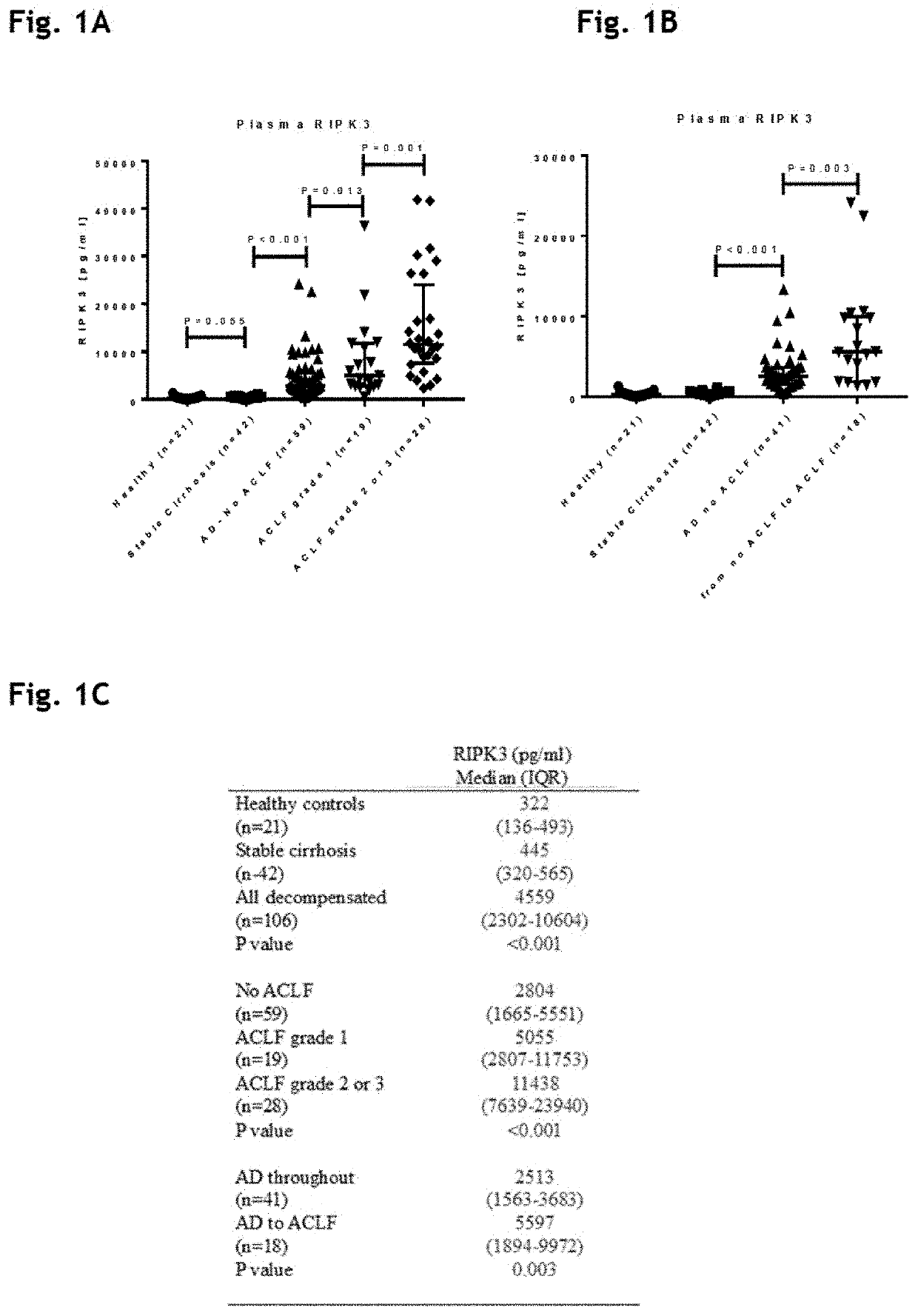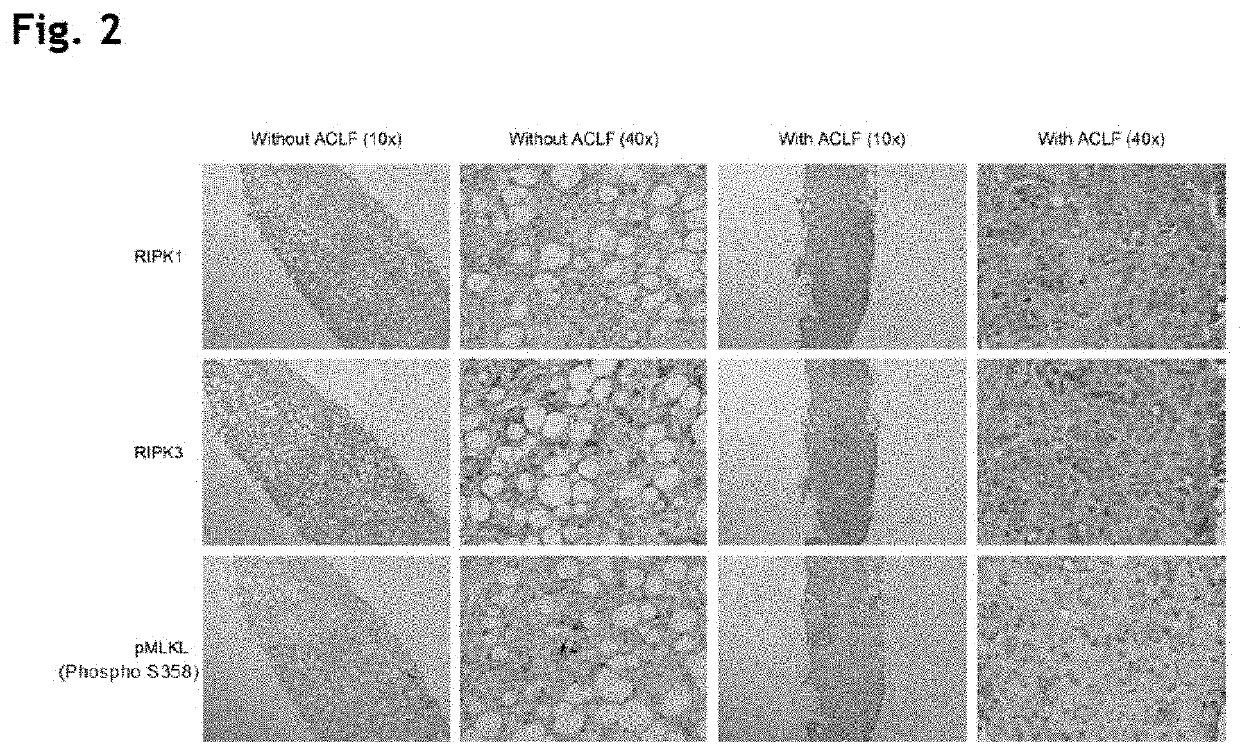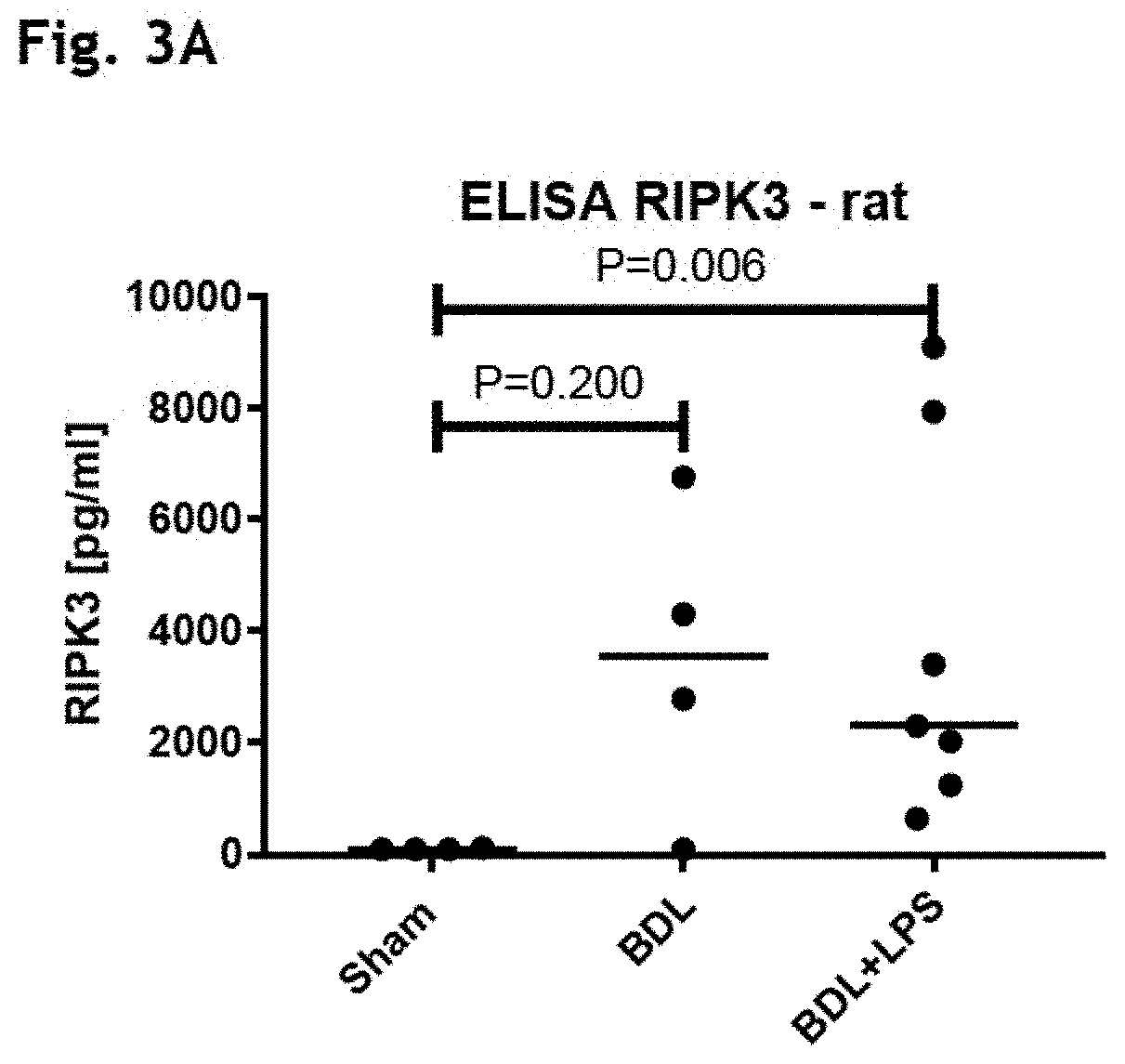Treatment of necroptosis
a necroptosis and necroptosis technology, applied in the field of necroptosis treatment, can solve the problems of organ failure, no specific treatment, and release of potentially pro-inflammatory cell contents,
- Summary
- Abstract
- Description
- Claims
- Application Information
AI Technical Summary
Benefits of technology
Problems solved by technology
Method used
Image
Examples
example 1
[0189]Patient Characteristics (Table 1)
[0190]One hundred and forty cirrhotic patients from the DASIMAR study cohort with AD were enrolled. The characteristics of this group can be seen in table 1. Of this number, 83 patients presented with no ACLF, 23 with ACLF grade 1 and 34 with ACLF grade 2 or 3. 18 of the no ACLF patients progressed to ACLF whilst inpatients. Additional 42 patients with stable cirrhosis (SC) and 21 healthy volunteers (HV) were also studied.
[0191]As would be expected from the previously published literature, patients with ACLF presented with significantly worse biochemical and haematological parameters and associated clinical scores, higher rates of organ failure and the presence of ACLF was associated with an increased 3-month mortality.
TABLE 1Baseline characteristics stratified by presenceo absence of ACLF at enrolmentNo ACLFACLF(n = 59)(n = 47)P valueAge (years)51(45-65)49(41-54)0.054Male (n, %)32(54.2)30(63.8)0.331Etiology (n, %)Alcohol31(52.5)34(72.3)0.046Al...
example 2
[0195]Immunohistochemistry Human (FIG. 2)
[0196]Increased expression of both RIPK1 and RIPK3 was observed in the liver biopsies of patients with ACLF in addition to alcoholic hepatitis compared to the biopsies of patients with alcoholic hepatitis and no ACLF. Additionally, the distribution of expression also varied between the noACLF and ACLF groups with the noACLF group demonstrating speckled intracellular expression whereas the ACLF group displayed specific areas of extensive diffuse expression. The pattern of expression of RIPK1 and 3 were similar. To further investigate whether the increased expression of RIPK1 and RIPK3 lead to transduction of the necroptotic signal downstream we stained the biopsy samples for expression of phosphorylated MLKL, the end point of the necroptotic pathway. The presence of ACLF in addition to alcoholic hepatitis was associated with enhanced expression of phosphorylated MLKL in comparison to alcoholic hepatitis without ACLF.
example 3
[0197]Animal Model of ACLF: Plasma RIPK3 and RIPK1 and 3 Immunohistochemistry (FIGS. 3A-3B)
[0198]As shown in FIGS. 3A and 7A, elevation of RIPK3 plasma levels was observed in the BDL(cirrhosis) and BDL+LPS (ACLF) animals compared to the sham-operated controls. BDL(cirrhosis) and BDL+LPS (ACLF) animals did not demonstrate significant elevation in circulating nucleosomes or RIPK3 when compared to sham-operated animals (FIG. 7B).
[0199]Histologically, very low level of expression of both RIPK1 and 3 was shown in the livers of the sham-operated rats. There was a marked upregulation of both kinases in the BDL group which was drastically exacerbated by the LPS insult in the BDL+LPS treated animals (FIG. 3B).
[0200]Immunohistochemistry of kidney tissues from BDL animals demonstrated positive staining for RIPK1 and RIPK3 in comparison to sham animals (FIG. 7C). Induction of ACLF in BDL animals by administration of LPS led to significant worsening of liver function tests [alanine aminotransfer...
PUM
| Property | Measurement | Unit |
|---|---|---|
| temperature | aaaaa | aaaaa |
| temperature | aaaaa | aaaaa |
| time | aaaaa | aaaaa |
Abstract
Description
Claims
Application Information
 Login to View More
Login to View More - R&D
- Intellectual Property
- Life Sciences
- Materials
- Tech Scout
- Unparalleled Data Quality
- Higher Quality Content
- 60% Fewer Hallucinations
Browse by: Latest US Patents, China's latest patents, Technical Efficacy Thesaurus, Application Domain, Technology Topic, Popular Technical Reports.
© 2025 PatSnap. All rights reserved.Legal|Privacy policy|Modern Slavery Act Transparency Statement|Sitemap|About US| Contact US: help@patsnap.com



